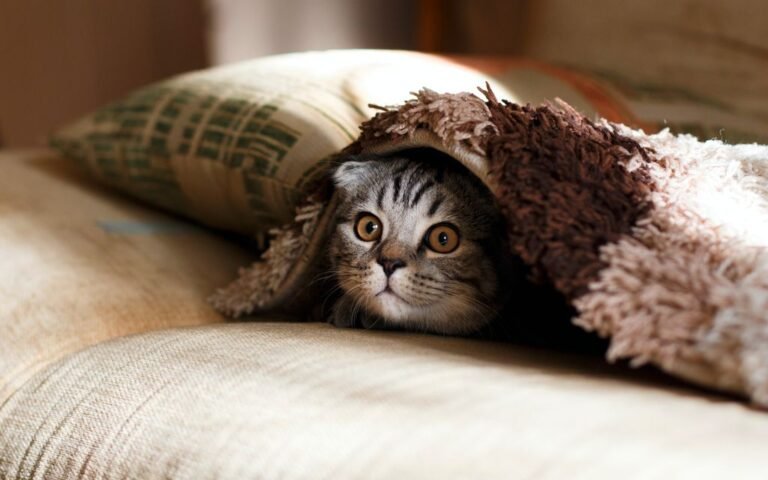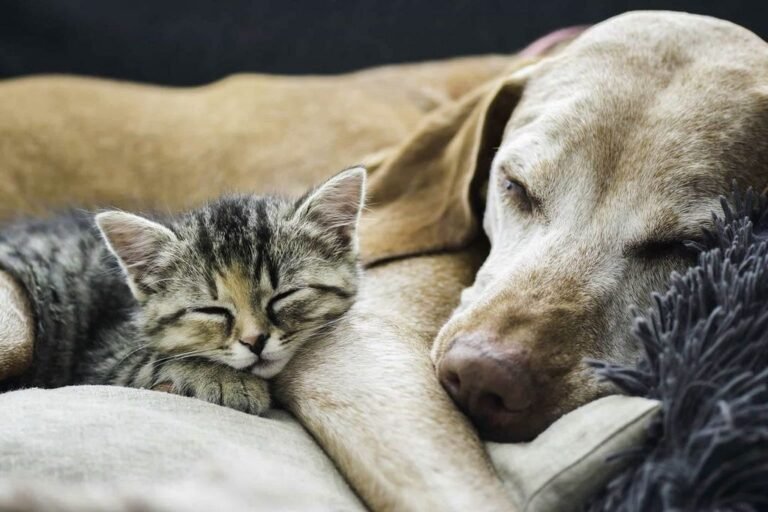5 Minute Fixes: Quick Home Adjustments for Pet Safety
Pet safety is a top priority for every pet owner, and making quick home adjustments for pet safety can significantly reduce the risk of accidents and injuries. By creating a pet-friendly environment, keeping your pet safe indoors, protecting your pet outdoors, and preventing accidents and injuries, you can ensure a safe and secure space for your beloved pets. Here are the key takeaways from our article:
Key Takeaways
- Secure hazardous items to prevent accidental ingestion or injury.
- Eliminate toxic plants from your home to avoid poisoning.
- Prevent access to electrical cords to reduce the risk of electrical injuries.
- Ensure proper waste disposal to prevent pets from accessing harmful substances.
- Use pet gates and barriers to restrict access to certain areas of the home.
Creating a Pet-Friendly Environment

Securing Hazardous Items
When creating a pet-friendly environment, it’s important to secure hazardous items to ensure your pet’s safety. This includes keeping cleaning products, chemicals, and medications out of reach. Store these items in cabinets or high shelves where your pet can’t access them. Additionally, be mindful of small objects that can be a choking hazard for your pet. Keep items like buttons, coins, and small toys out of their reach. By taking these precautions, you can create a safe and secure environment for your furry friend.
Eliminating Toxic Plants
When creating a pet-friendly environment, it’s important to eliminate toxic plants from your home. Some common plants that can be harmful to pets include lilies, daffodils, and azaleas. These plants can cause gastrointestinal upset, vomiting, and even organ failure if ingested by your furry friend. To ensure your pet’s safety, it’s best to remove these plants from your indoor and outdoor spaces.
In addition to removing toxic plants, it’s also essential to be aware of any subtle signs that your pet may have come into contact with a toxic plant. Watch out for symptoms such as excessive drooling, difficulty breathing, or changes in behavior. If you suspect your pet has ingested a toxic plant, it’s important to contact your veterinarian immediately.
To further protect your pet, consider creating a designated pet-friendly area in your home. This area can be a safe space where your pet can relax and play without the risk of coming into contact with any toxic plants. You can use baby gates or pet barriers to restrict access to certain areas of your home where toxic plants may be present.
Remember, the safety and well-being of your pet should always be a top priority. By eliminating toxic plants from your home and creating a pet-friendly environment, you can ensure that your furry friend stays happy and healthy.
Preventing Access to Electrical Cords
To ensure the safety of your pet, it’s important to prevent access to electrical cords. Pets can be curious and may chew on cords, which can lead to electrical shock or even fires. Here are some simple steps you can take to protect your pet:
- Keep cords out of reach: Make sure cords are secured and out of your pet’s reach. Use cord covers or hide cords behind furniture to prevent your pet from getting to them.
- Use cord protectors: Consider using cord protectors, which are plastic covers that can be placed over cords to prevent chewing.
- Provide alternatives: Provide your pet with appropriate chew toys and distractions to redirect their attention away from cords.
Remember, it’s important to regularly check cords for any signs of damage or wear. If you notice any frayed cords or exposed wires, replace them immediately to avoid any potential hazards. By taking these precautions, you can create a safe environment for your pet and prevent any accidents or injuries.
Ensuring Proper Waste Disposal
When it comes to proper waste disposal, it’s important to take the necessary steps to keep your pet safe. One key aspect is to ensure that any automatic cleaning devices, such as self-cleaning litter boxes or waste disposal systems, are securely closed and inaccessible to your pet. These devices can be convenient for pet owners, but they may pose a risk if your pet gets too close or tries to interact with them. Additionally, make sure to dispose of waste in a safe and hygienic manner, following local regulations and guidelines. This includes properly sealing waste bags and disposing of them in designated bins or containers. By taking these precautions, you can create a clean and safe environment for both you and your pet.
Keeping Your Pet Safe Indoors

Securing Windows and Balconies
When it comes to securing windows and balconies to keep your pet safe indoors, there are a few important steps to take. First, make sure that all windows are securely locked to prevent your pet from accidentally pushing them open. Additionally, consider installing window screens or window guards to provide an extra layer of protection. Keep in mind that screens alone may not be enough to prevent falls, so it’s important to take additional precautions. If you have a balcony, it’s crucial to create a barrier that prevents your pet from accessing it. This can be done by installing a pet gate or using a balcony netting system. Remember, balconies can be dangerous for pets, so it’s essential to take the necessary measures to keep them safe.
Using Pet Gates and Barriers
When it comes to keeping your pet safe indoors, pet gates and barriers are an essential tool. They provide a physical barrier that restricts your pet’s access to certain areas of your home, ensuring their safety and preventing them from getting into trouble. Whether you want to keep your pet out of the kitchen while you’re cooking or prevent them from going up the stairs, pet gates and barriers are highly effective in creating boundaries.
There are different types of pet gates and barriers available, including pressure-mounted gates, hardware-mounted gates, and expandable barriers. Each type has its own advantages and considerations, so it’s important to choose the one that best suits your needs and the layout of your home.
Here are some key points to keep in mind when using pet gates and barriers:
- Place the gate or barrier in a location that effectively blocks off the desired area without causing any inconvenience to you or your pet.
- Make sure the gate or barrier is securely installed to prevent your pet from knocking it down or squeezing through.
- Train your pet to respect the gate or barrier by using positive reinforcement and consistent training techniques.
- Regularly check the gate or barrier for any signs of wear and tear, and replace it if necessary.
By using pet gates and barriers, you can create a safe and controlled environment for your pet, giving you peace of mind knowing that they are protected and unable to access potentially hazardous areas.
Storing Medications Safely
When it comes to storing medications safely in your home, it’s important to take extra precautions to ensure the well-being of your pet. Here are some tips to help you keep your furry friend safe:
- Store all medications in a secure location that is out of reach of your pet. This can be a high shelf, a locked cabinet, or a drawer that your pet cannot access.
- Avoid leaving medications on countertops or tables where your pet can easily knock them over or chew through the packaging.
- Keep medications in their original containers with the labels intact. This will help you easily identify the medication and its dosage in case of an emergency.
- If you have multiple pets or children in the house, consider using a medication organizer to keep track of different medications and prevent any mix-ups.
Remember, prevention is key when it comes to keeping your pet safe from accidental ingestion of medications. By following these simple steps, you can create a safe environment for your furry friend.
Avoiding Harmful Cleaning Products
When it comes to keeping your pet safe, it’s important to be mindful of the cleaning products you use in your home. Avoid using harmful cleaning products that contain toxic chemicals, as these can be dangerous to your pet’s health. Instead, opt for pet-friendly cleaning products that are safe and non-toxic. Look for products that are specifically labeled as pet-friendly or safe for pets. These products are designed to clean effectively while minimizing the risk of harmful exposure to your furry friend.
Protecting Your Pet Outdoors

Building a Secure Fence
When it comes to protecting your pet outdoors, building a secure fence is essential. A sturdy fence can prevent your pet from wandering off and keep them safe within your property. Make sure the fence is tall enough to prevent your pet from jumping over it and that there are no gaps or holes they can squeeze through. Additionally, consider adding a lock or latch to the gate to ensure that your pet cannot accidentally escape. Regularly inspect the fence for any damage or wear and repair it promptly to maintain its effectiveness. By building a secure fence, you can provide a safe and enclosed space for your pet to enjoy outdoor activities.
Providing Shade and Water
When spending time outdoors with your pet, it’s important to ensure they have access to shade and water to stay cool and hydrated. Shade provides protection from the sun’s harmful rays and helps prevent overheating. You can create shade by setting up patio umbrellas or using canopies in your backyard. Additionally, make sure there is always a water source available for your pet to drink from. This can be a water bowl or a pet-friendly water fountain. Remember to refill the water regularly to keep it fresh and clean. Providing shade and water is essential for your pet’s comfort and well-being during outdoor activities.
Using Pet-Friendly Pest Control
When it comes to pest control for your outdoor space, it’s important to prioritize the safety of your furry friend. Opt for pet-friendly pest control options that are specifically designed to be safe for animals. These products are formulated with ingredients that are non-toxic to pets, ensuring that your pet can roam freely without any risk of harm. By using pet-friendly pest control, you can effectively keep pests at bay while keeping your pet safe and healthy.
Avoiding Harmful Plants and Chemicals
When it comes to keeping your pet safe outdoors, it’s important to be aware of the harmful plants and chemicals that can pose a threat. Some common plants, such as lilies, azaleas, and tulips, can be toxic to pets if ingested. It’s best to research the plants in your yard and remove any that could be harmful. Additionally, be cautious of chemicals that are used in your outdoor space, such as fertilizers, pesticides, and herbicides. These substances can be harmful if your pet comes into contact with them or ingests them. Consider using pet-friendly alternatives or natural remedies to keep your outdoor space safe for your furry friend.
Preventing Accidents and Injuries
Keeping Small Objects out of Reach
When it comes to keeping your pet safe, it’s important to ensure that small objects are out of their reach. Cat litter box is one such item that should be kept away from your pet. Cats are naturally curious and may be tempted to explore the litter box, which can be harmful to their health. To prevent any accidents or ingestion of litter, make sure to place the litter box in a secure location that is inaccessible to your pet. Additionally, consider using a covered litter box or a litter box with a lid to further prevent your pet from accessing it.
Securing Loose Wires and Cables
When it comes to securing loose wires and cables in your home, there are a few simple steps you can take to ensure your pet’s safety. First, make sure to tuck away any exposed wires that your pet may be tempted to chew on. Use cord covers or cable clips to keep wires out of reach and prevent your pet from getting tangled. Additionally, consider using cord organizers to keep wires neat and organized, reducing the risk of tripping hazards. Finally, if you have any automatic cat feeders or other electronic pet devices, make sure the cords are securely fastened and not easily accessible to your pet. By taking these precautions, you can create a safer environment for your furry friend.
Using Pet-Safe Household Products
When it comes to keeping your pet safe, it’s important to choose pet-safe household products. These products are specifically designed to be safe for your furry friend and can help prevent any potential harm or accidents. Here are some tips for using pet-safe household products:
- Read the labels: Before using any cleaning or grooming products, make sure to carefully read the labels. Look for products that are specifically labeled as pet-safe or non-toxic.
- Avoid harsh chemicals: Harsh chemicals can be harmful to pets, so it’s best to avoid using them altogether. Instead, opt for natural or organic alternatives.
- Store products properly: Keep all household products, including cleaning supplies and medications, out of your pet’s reach. Store them in a secure cabinet or high shelf.
Remember, using pet-safe household products is an important part of creating a safe and healthy environment for your pet.
Avoiding Hot Surfaces and Open Flames
When it comes to avoiding hot surfaces and open flames, there are a few important things to keep in mind as pet owners. First and foremost, always be aware of any hot surfaces in your home that your pet may come into contact with. This includes stovetops, hot plates, and even heating vents. It’s important to ensure that these areas are properly secured and inaccessible to your furry friend.
Additionally, it’s crucial to be cautious around open flames, such as candles or fireplaces. Pets can easily knock over candles or get too close to a fireplace, putting themselves at risk of burns or starting a fire. Make sure to never leave your pet unattended in a room with an open flame and always use protective barriers or covers to prevent any accidents.
To further protect your pet from hot surfaces and open flames, consider the following tips:
- Keep your pet’s bedding away from any heat sources.
- Use pet-friendly space heaters that have built-in safety features.
- Avoid using heating pads or blankets that could potentially overheat and cause burns.
Remember, the safety of your pet should always be a top priority, so take the necessary precautions to prevent any accidents or injuries.
Preventing accidents and injuries is crucial for the health and well-being of our beloved pets. At Whisker Wellbeing, we understand the importance of providing holistic and natural care to ensure the safety of your furry friends. Our wide range of products, including CBD, hemp, and other natural options, are specifically designed to enhance the physical and emotional quality of life for cats and dogs. Whether you’re looking to prevent accidents at home or during outdoor activities, our products can help. Visit our website today to explore our offerings and give your pets the care they deserve.
Conclusion
In just a few minutes, you can make simple adjustments to your home to ensure the safety of your beloved pets. By following the tips and suggestions in this article, you can create a pet-friendly environment that promotes their well-being and prevents accidents. Remember to secure loose cords and remove toxic plants to prevent choking or poisoning hazards. Additionally, consider installing baby gates to restrict access to certain areas and keeping cleaning supplies out of reach. With these quick home adjustments, you can provide a safe and happy space for your furry friends. Happy pet-proofing!
Frequently Asked Questions
How can I secure hazardous items in my home to keep my pet safe?
You can secure hazardous items by keeping them out of your pet’s reach, using childproof locks on cabinets, and storing them in locked containers.
What are some common toxic plants that I should eliminate from my home?
Some common toxic plants for pets include lilies, azaleas, tulips, and sago palms. It’s important to research and remove any plants that could be harmful to your pet.
How can I prevent my pet from accessing electrical cords?
You can prevent your pet from accessing electrical cords by using cord protectors, keeping cords out of reach, and using cord concealers.
What is the proper way to dispose of pet waste?
The proper way to dispose of pet waste is to bag it and dispose of it in a designated pet waste bin. Avoid flushing pet waste down the toilet.
How can I secure windows and balconies to keep my pet safe indoors?
You can secure windows and balconies by installing window screens, adding safety bars or grilles, and keeping windows and balcony doors locked.
What should I consider when storing medications to ensure my pet’s safety?
When storing medications, make sure they are kept in a secure, locked cabinet or drawer that is out of your pet’s reach. It’s also important to properly dispose of expired or unused medications.







